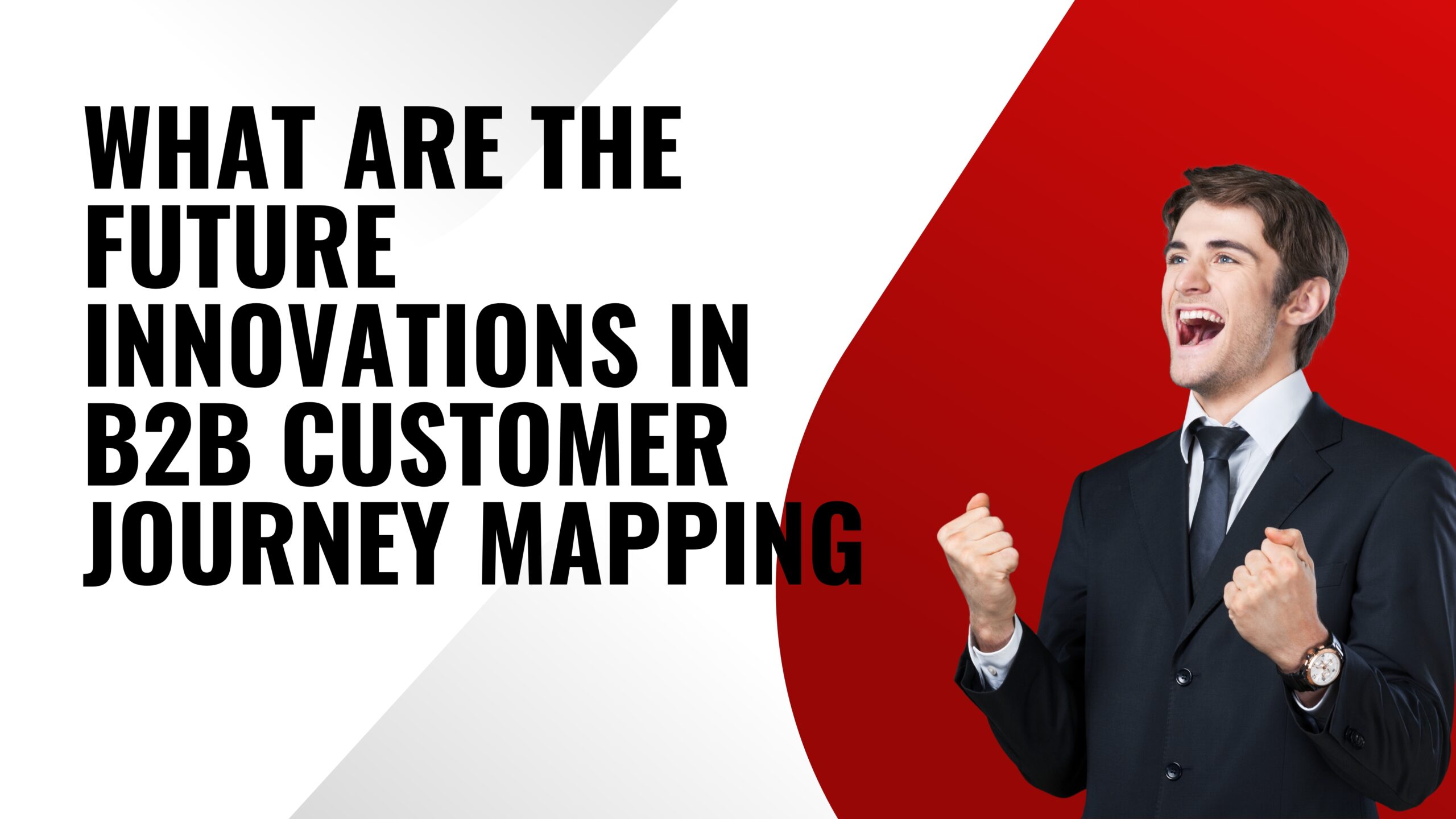
Understanding and optimizing the customer journey is critical for firms seeking long-term growth in the rapidly changing B2B interaction market. B2B Customer Journey Mapping is a strategic tool that allows businesses to view and analyze the different interactions a customer has with their brand. In this article, we’ll look at future developments in B2B Customer Journey Mapping, including insights into emerging trends and technology that will change the way businesses understand and interact with their customers.
Table of Contents
Introduction
B2B Customer Journey Mapping entails developing a visual depiction of a customer’s interactions with a firm. It goes beyond simple interactions, delving deeply into the consumer experience at each stage. This technique helps to discover pain points, optimize communication, and eventually improve the entire customer experience.
Importance of Customer Journey Mapping in B2B
Enhancing Customer Experience
Customer happiness is the foundation of any successful business. B2B Customer Journey Mapping enables businesses to put themselves in the shoes of their customers, gaining insight into their requirements and preferences. This, in turn, allows for the production of personalized experiences, resulting in increased levels of pleasure.
Identifying Pain Points
Understanding where customers confront obstacles along their journey allows firms to efficiently address pain areas. Whether it’s a complicated ordering procedure or communication challenges, charting the customer journey helps to streamline operations and improve overall satisfaction.
Streamlining Communication
Effective communication is critical in B2B relationships. Customer Journey Mapping enables firms to detect communication gaps and improve touchpoints, resulting in a seamless flow of information throughout the customer journey.
Current Trends in B2B Customer Journey Mapping
To understand the future, we must first recognize the present. Current trends in B2B Customer Journey Mapping include AI and machine learning integration, multi-channel mapping, and real-time analytics.
Integration of AI and Machine Learning
Artificial intelligence and machine learning techniques are increasingly being used in B2B customer journey mapping. These technologies give organizations important insights about client behavior, allowing them to forecast future encounters and personalize experiences.

Multi-channel Mapping
Customers engage through a variety of platforms, thus tracking their journey across these channels is critical. Multi-channel mapping provides a comprehensive view of the consumer experience, taking into account interactions on social media, email, websites, and other platforms.
Real-time Analysis
The capacity to analyze customer interactions in real time is game-changing. Businesses can adjust their tactics in real time, responding to client needs as they arise. Real-time analysis ensures agility and reactivity in a constantly changing industry.
Future Innovations in B2B Customer Journey Mapping
Predictive Analytics
Predictive analytics holds the key to B2B Customer Journey Mapping’s future. Businesses may forecast future interactions by evaluating historical behaviors and patterns, enabling proactive engagement and personalized experiences.
Virtual Reality Integration
Consider traveling through the customer journey in a virtual environment. Virtual Reality (VR) integration is poised to transform B2B Customer Journey Mapping by giving a more immersive insight of the customer experience.
Personalized Customer Journeys
The future will see a shift toward hyper-personalization. Businesses will use data to develop highly personalized client journeys that address individual requirements and interests.
Benefits of Future Innovations
Improved Decision Making
Predictive analytics and real-time analysis enable firms to make more informed decisions. Anticipating client needs enables proactive decision-making, which leads to better overall performance.
Enhanced Customer Engagement
Virtual reality and tailored trips help customers interact more deeply. When clients feel understood and cared for on a personal level, their relationship to the company grows, creating loyalty.
Competitive Advantage
Early adoption of innovative B2B customer journey. Mapping procedures offer a competitive advantage. Businesses who embrace these future developments establish themselves as industry leaders, staying ahead of the ever-changing market.
Challenges and Considerations
While the future holds exciting advancements, organizations must deal with difficulties like as data security and privacy, interaction with existing systems, and the need for effective training and adoption of new technology.

Data Security and Privacy
As client data becomes increasingly important in B2B operations, maintaining its security and privacy is critical. Businesses must invest in strong security procedures to secure sensitive data.
Integration Issues
Integrating new technology into old systems can be challenging. Businesses must have a strategy plan for smooth integration in order to avoid operational disruptions.
Training and Adoption
To be effective, innovations require proper training of staff to use new tools. The adoption of new technology necessitates a culture shift inside the business, emphasizing the value of continual training.
Case Studies
Examining successful implementations of novel B2B Customer Journey Mapping tools yields practical insights on their impact on business outcomes.
Tips for Effective Implementation
Start with a Clear Strategy
Before plunging into innovation, firms should develop a clear plan for B2B Customer Journey Mapping. Define targets, define critical measurements, and link innovations to larger corporate goals.
Involve Stakeholders
Involving key stakeholders ensures a thorough understanding of consumer interactions. Collaborate with the sales, marketing, and customer service departments to collect varied insights for a comprehensive mapping strategy.
Continuous Monitoring and Adaptation
The customer’s journey is dynamic. Continuous monitoring and adaptability to shifting market trends and client behaviors is critical for long-term success.
Expert Opinions
To get more insights, we’ll hear from industry experts who have successfully adopted creative B2B Customer Journey Mapping methods.
Also Reads: How Can B2B Customer Journey Mapping Improve Marketing ROI?
What Are the Top Trends in B2B Customer Journey Mapping for 2023?
How Can B2B Customer Journey Mapping Drive Product Innovation?
Why Is B2B Customer Journey Mapping an Ongoing Process?
What Are the Keys to Effective B2B Customer Journey Mapping?
Conclusion
The future of B2B Customer Journey Mapping seems promising, with predictive analytics, virtual reality, and tailored journeys poised to transform how organizations interact with their customers. While problems exist, the benefits of these advances far outweigh the risks, paving the way for better decision-making, increased consumer involvement, and a competitive advantage in the market.
Frequently Asked Questions
Q: How can businesses overcome integration challenges when adopting virtual reality in customer journey mapping?
A: Businesses can overcome integration challenges by developing a comprehensive integration plan, involving IT experts, and ensuring compatibility with existing systems.
Q: What role does predictive analytics play in enhancing the B2B customer journey?
A: Predictive analytics anticipates customer needs, enabling businesses to proactively tailor experiences, ultimately improving customer satisfaction.
Q: How can companies ensure data security and privacy in the era of personalized customer journeys?
A: Companies can ensure data security by implementing robust encryption measures, strict access controls, and compliance with data protection regulations.
Q: What are the key factors to consider when creating a clear strategy for B2B Customer Journey Mapping?
A: Key factors include defining objectives, identifying relevant metrics, and aligning the strategy with overall business goals.
Q: Why is continuous monitoring and adaptation crucial in B2B Customer Journey Mapping?
A: The customer journey is dynamic, and continuous monitoring ensures businesses stay agile, adapting strategies to changing market trends and customer behaviors.
